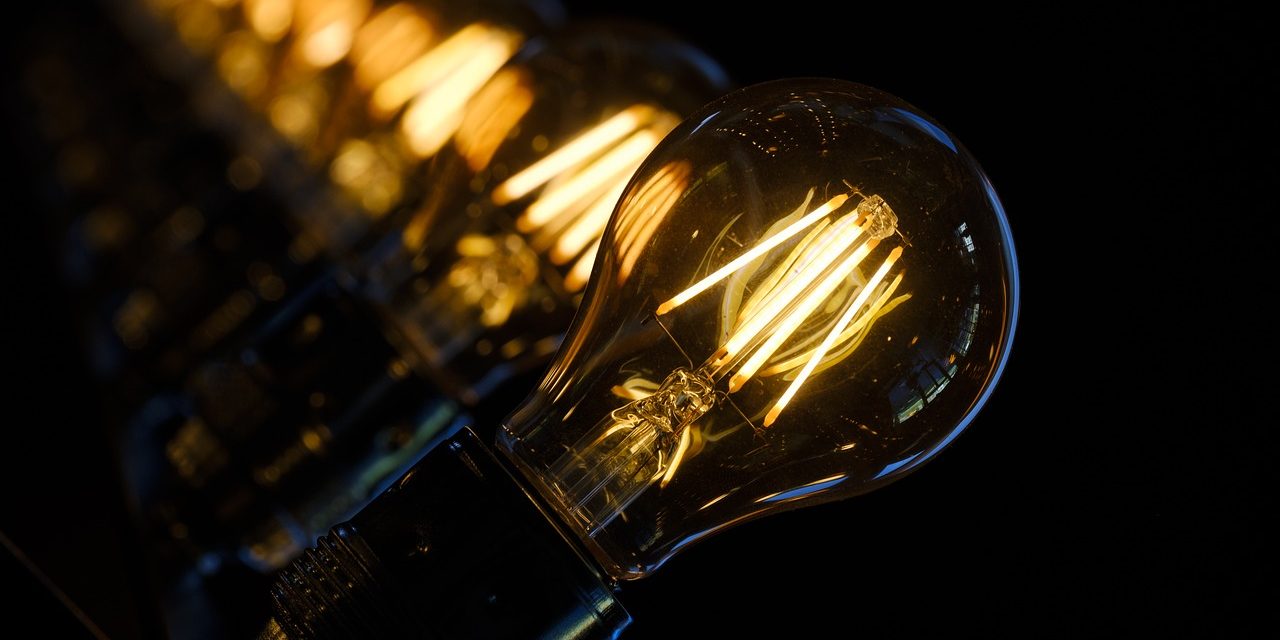What is current?
What is the difference between alternating current and direct current? Is it possible to convert AC to DC current? What is electricity at all? We will try to answer these questions here. We will start at the end, because that is the most important question. In the encyclopaedia we will read that electric current is an orderly movement of electric charges. This means that all loads are currently moving in one direction.
In electric cables, which are made of copper or aluminum, current carriers are electrons from the last electron shells of these elements. The average velocity of these electrons is around 1 cm/sec, so after the current is switched on these electrons will not flow from the switch to the bulb or to any other electrical device. The fact that the bulb is lit at once is a result of the fact that, although the electrons will move only one centimetre, it will also move the electrons that are right next to the bulb. And they are the ones that power the electrical device at the moment.
Now we can make a little clearer our considerations and say that we are basically distinguishing between two types of current: direct current and alternating current. Direct current is characterised by the fact that it always has the same value and the same polarity (Verizon, minus). This means that such a current always flows in only one direction. This is shown in Figure 1:
Fig. 2 clearly shows that AC current has a completely different characteristic. Once it changes direction (once it goes in one direction and once it goes in the other), two – it constantly changes its value. It starts from scratch, grows to its maximum value and then goes down to zero again. Now it changes the direction of movement and it grows again to the maximum value, it decreases, it changes direction and apathy, everything from scratch. This is why we call this current AC. For example, the voltage in the socket reaches a maximum of 325 volts, although its effective voltage, i.e. 230V / 50Hz, is given everywhere. The latter value indicates that the current performs 50 cycles per second. In one cycle, the current flows in one direction, then turns back and flows in the opposite direction. From the technical point of view, the current drawn from the socket is an alternating current with variable characteristics, i.e. not only changing its direction, but also constantly changing its value. However, it is commonly said that there is AC power in the outlet. Alternating current is used because it is easier to “transport” it from a power plant to a remote customer and then to change its properties easily, as we will see in a moment.
Direct current can be found e.g. in batteries or accumulators, although it is also present in all electronic devices, such as TVs, radios or cassette recorders. Although most of them are powered from a socket, i.e. from AC power, in the middle of these devices this power is converted into DC power.
AC rectification
So we come to the heart of our story: How do I straighten up the AC current? Certainly not by pulling it up like a curved wire. So how?
First of all, we must ensure that the current only flows in one direction. To do this, simply turn on the charger diode (Fig. 3a). It has such properties that it transmits current in only one direction. In this way the characteristics of our current will look as in Fig.3b.
It is clear from the figure that the current flows only in one direction, in these hatched areas. But what about such a current? Once that in the middle of the period it does not flow at all (because at this time it should flow in the opposite direction), and two, it still changes its values. This can be done by using four diodes instead of one diode, which can be connected to each other (Fig. 4a and 4b).
Additional diodes made the current flow even in places where it did not flow sooner. In this way, the current flows more frequently, but still changes over time. We call it a pulsating current, because it behaves as if it was pulsating all the time. If we switch on a capacitor with a large capacity between the pros and cons, we will be able to significantly improve the properties of our current. The capacitor accumulates electric charges within itself, and when the voltage drops, it gives them back to the circuit, thus causing the voltage to appear at moments when it was not before. However, this voltage is lower than the maximum one, and therefore we obtain just such a diagram for the current (Fig. 5). Perhaps someone would think that such a voltage is enough to power e.g. the radio, but it turns out that it is not. Most of these types of devices require genuine DC voltage. Otherwise in the loudspeaker one could hear buzzing, so called net sound, unpleasant for the ear. It is therefore necessary to straighten up the current even further.
Current stabilisation
Until now, we have been saying that we are straightening the current. Further steps will already be called stabilization, i.e. making it from the characteristics in Fig. 5 to the ones shown in Fig. 1.
Knowledge is super alternating current direct current that is how to straighten up the current











